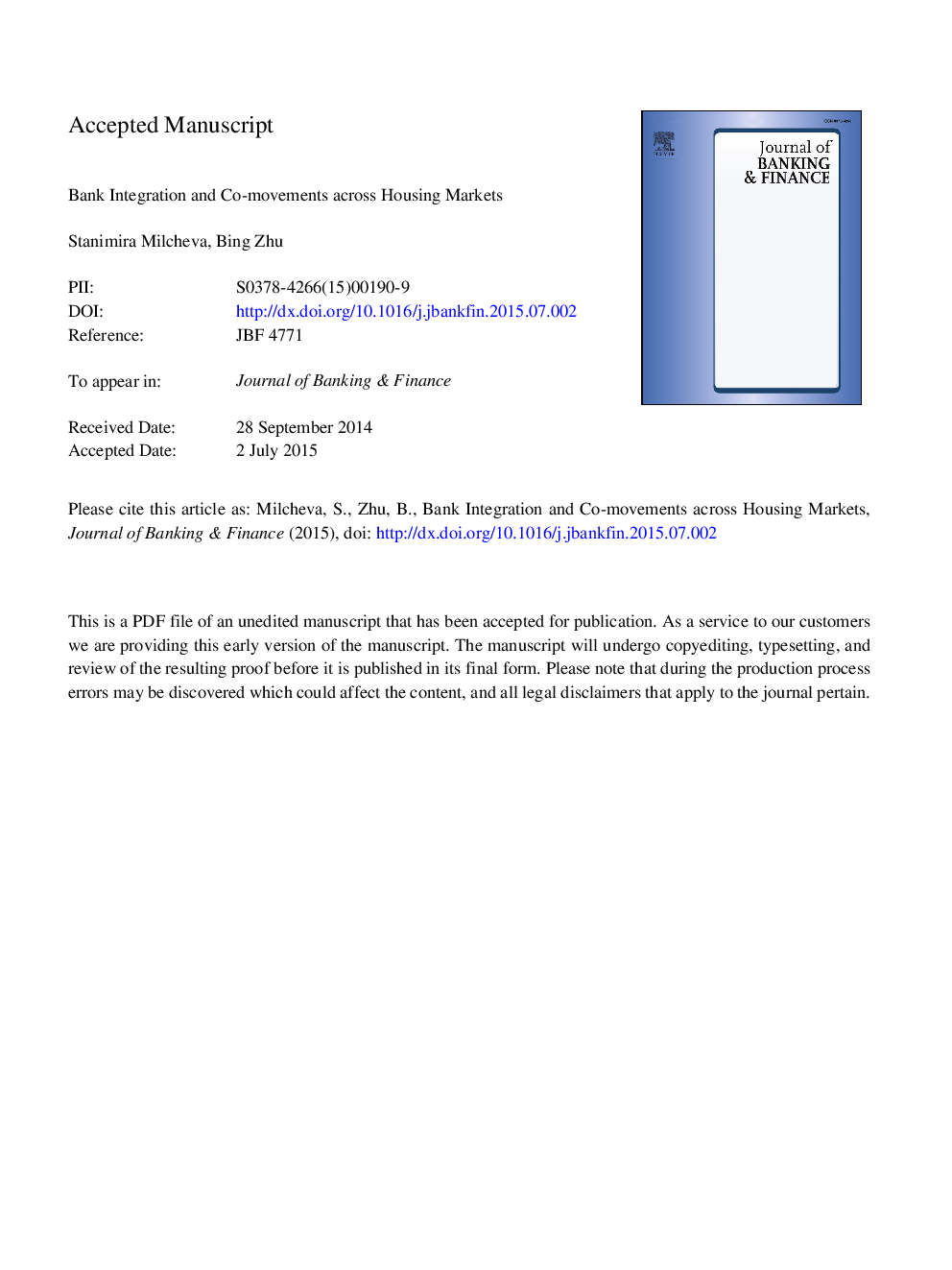| Article ID | Journal | Published Year | Pages | File Type |
|---|---|---|---|---|
| 5088277 | Journal of Banking & Finance | 2016 | 74 Pages |
Abstract
This paper investigates whether bank integration measured by cross-border bank flows can capture the co-movements across housing markets in developed countries by using a spatial dynamic panel model. The transmission can occur through a global banking channel in which global banks intermediate wholesale funding to local banks. Changes in financial conditions are passed across borders through the banks' balance-sheet exposure to credit, currency, maturity, and funding risks resulting in house price spillovers. While controlling for country-level and global factors, we find significant co-movement across housing markets of countries with proportionally high bank integration. Bank integration can better capture house price co-movements than other measures of economic integration. Once we account for bank exposure, other spatial linkages traditionally used to account for return co-movements across region - such as trade, foreign direct investment, portfolio investment, geographic proximity, etc. - become insignificant. Moreover, we find that the co-movement across housing markets decreases for countries with less developed mortgage markets characterized by fixed mortgage rate contracts, low limits of loan-to-value ratios and no mortgage equity withdrawal.
Related Topics
Social Sciences and Humanities
Economics, Econometrics and Finance
Economics and Econometrics
Authors
Stanimira Milcheva, Bing Zhu,
